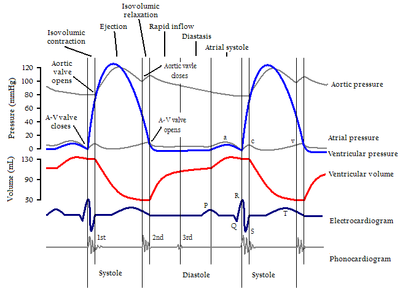
Diastasis (physiology)
Encyclopedia

Physiology
Physiology is the science of the function of living systems. This includes how organisms, organ systems, organs, cells, and bio-molecules carry out the chemical or physical functions that exist in a living system. The highest honor awarded in physiology is the Nobel Prize in Physiology or...
, diastasis is the middle stage of diastole
Diastole
Diastole is the period of time when the heart fills with blood after systole . Ventricular diastole is the period during which the ventricles are relaxing, while atrial diastole is the period during which the atria are relaxing...
during the cycle of a heartbeat
Cardiac cycle
The cardiac cycle is a term referring to all or any of the events related to the flow or blood pressure that occurs from the beginning of one heartbeat to the beginning of the next. The frequency of the cardiac cycle is described by the heart rate. Each beat of the heart involves five major stages...
, where the initial passive filling of the hearts ventricles has slowed down, but before the atria contract to complete the filling.
See also
- Compare diastasis (pathology)Diastasis (pathology)In pathology, diastasis is the separation of parts of the body that are normally joined together, such as the separation of certain abdominal muscles during pregnancy, or of adjacent bones without fracture.-See also:* Diastasis recti...

